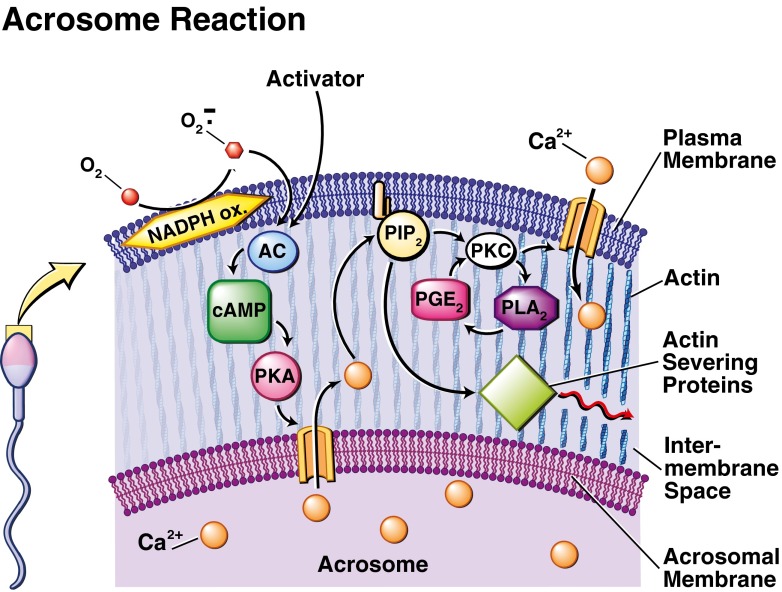Fig. 2.
Biochemical pathway proposed to regulate the acrosome reaction (AR). Induction of the AR can occur by physiological and non-physiological activators, including the zona pellucida (ZP), progesterone, or reactive oxygen species (ROS). Subsequent release of Ca2+ from the acrosomal calcium store generated during capacitation causes the cleavage of phosphatidylinosital-4,5-biphosphate (PIP2), which forms diacylglycerol (DAG) and inosital triphosphate (IP3). The latter activates actin-severing proteins, which leads to the fusion of the acrosomal and plasma membranes, and eventual acrosomal exocytosis. DAG later activates protein kinase C (PKC), causing a second, greater influx of Ca2+ and activation of phospholipase A2 (PLA2). The release of large amounts of membrane fatty acids increases the fluidity of the plasma membrane necessary for later fusion with the oocyte

